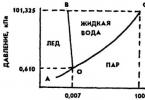Презентацию можно использовать при изучении тем: Экология, Окружающая среда, Россия и тп. Озеро Байкал это жемчужина России, представленную презентацию можно легко вписать в любую часть урока и в зависимости от творчества учителя и уровня учащихся на ее основе разработать комплекс грамматических и лексических упражнений
Скачать:
Предварительный просмотр:
Чтобы пользоваться предварительным просмотром презентаций создайте себе аккаунт (учетную запись) Google и войдите в него: https://accounts.google.com
Подписи к слайдам:
Lake Baikal
Lake Baikal is the world’s oldest and deepest lake in the world. It contains 20 % of all fresh running water on the planet, making it the single largest reservoir.
Lake Baikal is 30 million years old. Its average depth is 744.4metres. It is the second most voluminous lake after the Caspian Sea.
Located in the south of the Russian region of Siberia, between Irkutsk region to the northwest and the Buryat Republic to the southeast.
Lake Baikal was formed as an ancient rift valley, having the typical long crescent shape with a surface area of 31722 sq km
Baikal is home to more than 1700 species of plants and animals, two third of which can be found nowhere else in the world and was declared a UNESCO World Heritage Site in 1996.
Lake Baikal was known as the “North Sea” in historical Chinese text. It was situated in the then Xiongnu territory. Very little was known to Europeans about the lake until the Russian expansion into the area in the 17 th century. The first Russian explorer to reach Lake Baikal was Kurbat Ivanov in 1643
Baikal is one of the most biodiesel lakes on Earth, with 1340 species of animal and 570 species of plant.
The landscape surrounding the lake, with its mountains, forests, tundra, lakes, islands and steppes is exceptionally picturesque.
The lake is completely surrounded by mountains. The Baikal Mountains on the north shore and the taiga are protected as a national park. It contains 27 islands; the largest, Olkhon , is 72 km long and the third-largest lake-bound island in the world.
The lake is fed by as many as three hundred and thirty inflowing rivers. The main ones are the Selenga River, the Barguzin River, The Upper River, the Turka River, The Sarma River and the Snezhnaya River . It is drained through a single river, the Angara River. It is named the daughter of Baikal. Do you know the legend about Angara?
In the midst of a thinly populated wildness there is the foremost natural wonder - Lake Baikal. It is the oldest lake in the world - its age is about 25-30 million years. Scientists estimated that more than 1500 life forms live in and around this lake. They can be found nowhere else on Earth. It occupies the territory of 12000 m2 and 400 km long. About 30 uninhabited isles are scattered throughout the lake. It’s the largest reservoir of drinking water. It contains 1/6 of fresh water found on the planet and in spite of the vast pollution by the nearby industry the most of it still remains clean and clear.
Most of the coastline lies in an environmentally protected area. The most numerous of the indigenous people are Buryats. They have been living here for many centuries. A feeling of tranquility settles over the coastal villages during long summer afternoons. A vehicle driving along the village’s streets is a rare sight. A motorcycle with a sidecar is the most popular civil transport; and a passenger car still remains an object of curiosity for children.
The area’s largest city is Ulan-Ude which was first established by the Russians as an outpost for tsar’s tax collectors during Russia’s Eastward expansion in the XVI and XVII centuries. It lies in the border area between the Siberian forests and the grassy steppes. It’s an average Siberian town without much distinction, except for a strange fancy relict in the main square. The world’s biggest head of Vladimir Lenin has more than 25 feet tall and it is ironically said by rumor that it was inspired by the head of Buddha that was located in Ulan-Ude before the Soviet takeover. And now although most of Soviet monuments have been dismantled this one is going to stay because the locals became quite fond of it.
Байкал
Среди малонаселенной местности находится природное чудо - озеро Байкал. Это самое древнее озеро в мире - его возраст составляет около 25-30 миллионов лет. По оценкам ученых более 1500 форм жизни живут возле и в этом озере. Кроме Байкала их найти нельзя нигде на Земле. Озеро занимает территорию 12 000 м2 и 400 км в длину. Около 30 необитаемых островов разбросаны по всему озеру. Это крупнейший резервуар питьевой воды. Он содержит 1/6 пресной воды находится на планете, и несмотря на подавляющее загрязнения близлежащей промышленности большинство воды до сих пор остается чистой и прозрачной.
Большая часть береговой линии находится в экологически охраняемой территории. Наиболее многочисленным из коренных народов являются буряты. Они жили здесь на протяжении многих веков. Чувством спокойствия веет от прибрежных деревень во время долгих летних дней. Транспортное средство, проезжающее по улицам деревни - редкое зрелище. Мотоцикл с коляской является самым популярным видом гражданского транспорта; а автомобиль до сих пор остается предметом любопытства для детей.
Самым большим городом в области является Улан-Удэ, который был основан русскими в качестве форпоста для царских сборщиков налогов во время российской экспансии на восток в XVI и XVII веках. Он расположен в районе границы между сибирскими лесами и травянистыми степями. Это средний сибирский город без особых отличий, исключением является странный реликт на главной площади. Это самая большая голова В.И.Ленина, которая более чем 25 футов в высоту. По слухам, она была вдохновлена головой Будды, которая была расположена в Улан-Удэ до установления советской власти. И теперь, хотя большинство из советских памятников были демонтированы, её никто не собирается сносить, потому что местные жители очень полюбили её.
Lake Baikal
Lake Baikal is located in Russia, the southern part of Eastern Siberia.
It is the deepest lake in the world.
The largest natural reservoir of fresh water.
Baikal is located on the border of the Irkutsk region and the Republic of Buryatia.
The lake stretches from north to south-west by 636 km. Width of the lake ranges from 25 to 80 km.
Into Baikal 336 permanent rivers and streams.
The greatest volume of water entering the lake from the Selenga River. A consequence of Baikal only river Angara.
Baikal area 31470kv.km. The maximum depth is 1637m
To represent the vast water body of Lake Baikal, we note that the Angara need 387 years of continuous operation to drain its water bowl, provided that during this time into the lake or get any liters of water.
The volume of water in Lake Baikal 23,000 cubic meters. km
This represents 20% of the world and 90% of Russian reserves of fresh water. Water in the lake is more than in all 5 Great Lakes (Superior, Michigan, Huron, Erie and Ontario).
From January to April, the lake is usually covered with ice.
Baikal water is unusually transparent, pure and saturated with oxygen. Spring water clarity is 40m.
The lake has 52 species of fish, of which 27 are endemic. Most popular: Siberian sturgeon, cisco, whitefish, perch, dace, catfish, carp, burbot, golomyanka.
Golomyanka
Golomyanka-transparent fish without scales and swim bladder,
35% consists of fat
Found only in Lake Baikal and belongs to a class of viviparous.
Golomyanka capable of producing up to 2,000 small fish.
The name of the fish comes from the word «golomen», which means «high seas» .Golomyanka «flies» through the pectoral fins with a wide-open mouth.
Baikal cisco
Latin name Baikal cisco translated as «wandering» sig.Nazvanie sluchayno.Uchnye not believe that cisco penetrated into Baikal in the interglacial period of the seas of the Arctic Ocean.
Baikal cisco is endemic, ie. not found anywhere except Lake Baikal.
Baikal cisco divided into several populations. Most popular-Selenga and Barguzin.
Baikal Seal
One of the three freshwater seal species in the world. Endemic to Lake Baikal. The average length of an adult seal -165 cm. Weight: 50 to 130 kg. Speed in a tranquil setting of 7-8 km / h. The maximum speed of 20-25 km / h (develops when away from danger). On a solid surface moves slowly, turning fins and tail.
Cubs are born in mid-March. Usually a baby seal born weighing up to 4kg. Skin cub silver. About 4-6 weeks the baby spends inside the lair, eating his mother’s milk.
Scientists believe that the seal has penetrated into Baikal from the Arctic Ocean to the Yenisei and Angara in the Ice Age.
Nerpa winters on ice lairs under the snow. She can breathe through the vents, the air holes. Seal makes them raking claws ice forelimbs.
From coastal animals are most common: bear, deer, elk, moose.
Roe deer, musk deer, hare, wolf, fox
On Baikal live many birds: loon, Dalmatian pelican, cormorant, egret,
Black stork, partridge, grouse, eagle
In the midst of a thinly populated wildness there is the foremost natural wonder - Lake Baikal. It is the oldest lake in the world - its age is about 25-30 million years. Scientists estimated that more than 1500 life forms live in and around this lake. They can be found nowhere else on Earth. It occupies the territory of 12000 m2 and 400 km long. About 30 uninhabited isles are scattered throughout the lake. It’s the largest reservoir of drinking water. It contains 1/6 of fresh water found on the planet and in spite of the vast pollution by the nearby industry the most of it still remains clean and clear.
Most of the coastline lies in an environmentally protected area. The most numerous of the indigenous people are Buryats. They have been living here for many centuries. A feeling of tranquility settles over the coastal villages during long summer afternoons. A vehicle driving along the village’s streets is a rare sight. A motorcycle with a sidecar is the most popular civil transport; and a passenger car still remains an object of curiosity for children.
The area’s largest city is Ulan-Ude which was first established by the Russians as an outpost for tsar’s tax collectors during Russia’s Eastward expansion in the XVI and XVII centuries. It lies in the border area between the Siberian forests and the grassy steppes. It’s an average Siberian town without much distinction, except for a strange fancy relict in the main square. The world’s biggest head of Vladimir Lenin has more than 25 feet tall and it is ironically said by rumor that it was inspired by the head of Buddha that was located in Ulan-Ude before the Soviet takeover. And now although most of Soviet monuments have been dismantled this one is going to stay because the locals became quite fond of it.
Среди малонаселенной местности находится природное чудо - озеро Байкал. Это самое древнее озеро в мире - его возраст составляет около 25-30 миллионов лет. По оценкам ученых более 1500 форм жизни живут возле и в этом озере. Кроме Байкала их найти нельзя нигде на Земле. Озеро занимает территорию 12 000 м2 и 400 км в длину. Около 30 необитаемых островов разбросаны по всему озеру. Это крупнейший резервуар питьевой воды. Он содержит 1/6 пресной воды находится на планете, и несмотря на подавляющее загрязнения близлежащей промышленности большинство воды до сих пор остается чистой и прозрачной.
Большая часть береговой линии находится в экологически охраняемой территории. Наиболее многочисленным из коренных народов являются буряты. Они жили здесь на протяжении многих веков. Чувством спокойствия веет от прибрежных деревень во время долгих летних дней. Транспортное средство, проезжающее по улицам деревни - редкое зрелище. Мотоцикл с коляской является самым популярным видом гражданского транспорта; а автомобиль до сих пор остается предметом любопытства для детей.
Самым большим городом в области является Улан-Удэ, который был основан русскими в качестве форпоста для царских сборщиков налогов во время российской экспансии на восток в XVI и XVII веках. Он расположен в районе границы между сибирскими лесами и травянистыми степями. Это средний сибирский город без особых отличий, исключением является странный реликт на главной площади. Это самая большая голова В.И.Ленина, которая более чем 25 футов в высоту. По слухам, она была вдохновлена головой Будды, которая была расположена в Улан-Удэ до установления советской власти. И теперь, хотя большинство из советских памятников были демонтированы, её никто не собирается сносить, потому что местные жители очень полюбили её.
№ слайда 1
Описание слайда:
Unique Baikal By Shipovskoy Roman The Center of Children"s Creation "Sviblovo", Moscow.
№ слайда 2

Описание слайда:
About Baikal Lake Lake Baikal is the world"s oldest and deepest lake. The amazing purity of its waters, huge territory and deep make it the most famous and exiting lake in the world. It lies in southern Siberia, almost in the center of Asia. Its watershed extends over the Mongolian border for 636 km. Its area is about 31,500 square kilometers and equal to the area of such countries as Belgium, Switzerland, Netherlands or Denmark. The coastline of Baikal is almost 2000 km long, which is equal to the distance from Arkhangelsk to Rostov. Lake Baikal contains one-fifth of the world"s surface water resources, and four-fifth of fresh waters of Russia. Its basin could hold waters of all five American Great Lakes, which are 8 times bigger.
№ слайда 3

Описание слайда:
The Baikal is surrounded by mountain chains which are covered with taiga lifting turned to bushes and mountain tundra. The southern hills are generally unforested.
Описание слайда:
There is a lot of sun on Lake Baikal. The number of sunny days at its costs exceeds the most of resorts on the Black Sea and some on the Mediterranean, for example Nice. In summer the temperature of the water doesn`t outreach the 15 degrees. Below 250 meters the temperature is stable and is about 3.5 degrees for the whole year. In January the Lake is fettered by the thick ice. But because of unusual purity you can look through the ice for more than 12 meters deep.The lake is indeed old: clay samples taken in 1990 show that Lake Baikal is at least 30 million years old, that makes it the world"s oldest known lake. The second old Lake Tanganyika in Africa is at least 500 thousand years younger. In earlier days the territory of the Baikal was a number of shallow lakes inhabited by heat-loving animals and plants. The coasts were covered by subtropical vegetation. The modern shape was formed about 1 million years ago. The process of basin formation is still going on, and sometimes there are earthquakes there.
№ слайда 5

№ слайда 6

Описание слайда:
№ слайда 7

Описание слайда:
Flora and Fauna The Baikal is also one of the most interesting biotopes in the world. As it is quite an isolated lake, the nature there could develop balanced and varied. The animal world of the lake forms a remarkably complementary and harmonies system. The flora and fauna of the lake are mostly endemic. It is inhabited by over 58 fish species. The most well-known species are: the omul, Siberian whitefish, the grayling, the taimen, the sturgeon, the Baikal oil fish, and goldilocks. More than 2000 plants grow on the lake coasts. Lake Baikal forms an ideal habitat for typical sea mammal –the nerpa (the Baikal seal). Still not all organisms inhabited Baikal are explored. Scientists continue to discover more and more unknown species.
№ слайда 8

Описание слайда:
№ слайда 9

Описание слайда:
№ слайда 10

Описание слайда:
№ слайда 11

Описание слайда:
№ слайда 12

Описание слайда:
№ слайда 13

Описание слайда:
Baikal’s Exploration Preservation of the lake, however, has recently come to international attention.The Baikal’s scientific exploration history is over 300 years, while the harmful impact on its ecosystem numbers merely 50 years.Industrial and civil buildings have grown and spread, the population has enlarged and new towns and settlements have arisen, new lands have been ploughed up and more chemicals have been used in agriculture.
№ слайда 14

Описание слайда:
№ слайда 15

Описание слайда:
Описание слайда:
Plants and mills Nowadays there are more than 60 plants and mills along the Baikal’s cost. The biggest are Baikalsk’s and Selenginsk`s forest transshipment bases and Paper-and-Pulp Mills at Baikalsk and Selenginsk.The results of the pollution are terrifying. More than 50 per cent of the world"s purest water has been ruined. The whole ecological system of the lake has changed greatly. The mills has polluted the surrounding region and threatened the pristine conditions that have existed for centuries.
№ слайда 17

Описание слайда:
№ слайда 18

Описание слайда:
№ слайда 19





